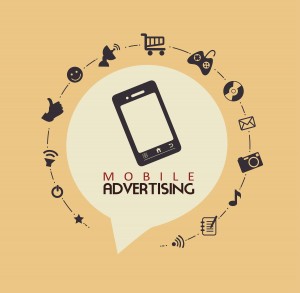This is the third in a series of posts walking readers through the mobile advertising space. Stay tuned for more posts over the coming weeks. This post is also published on the Rubicon Project blog.

Fixing Mobile
As I covered in the first blog post, mobile presents a tremendous market opportunity for publishers. A large and growing share of traffic comes from mobile devices. According to comScore, 13.3% of pageviews came from mobile devices in August.
On a smartphone there are basically two ways to go online: web or apps. Let’s start with apps. In contrast to mobile web, apps have been built from the ground up for smartphones. Content has rendered into an experience that doesn’t require a mouse and/or keyboard. Additionally, apps normally don’t feel like a pared down or diminished version of their online display counterpart. Think about your favorite app – it’s likely that you’re playing a game, checking weather, interacting on a social network or looking for directions. These experiences seem natural on a smartphone app.
Apps vs Browser
In contrast to apps, using a browser on a smartphone to access a site’s “desktop experience” creates a number of challenges. When presented with a standard web page the smartphone’s browser will shrink the content to fit the width of the display. This has the unfortunate effect of making all of the content very small, forcing the user to pinch, zoom and swipe to see content.
In order to combat this effect, publishers create “mobile optimized” websites. These sites are built with the screen size limits in mind. They typically feature pared down versions of their online display (desktop) counterparts, and often put smaller versions of images in-line with text designed to take the full width of the smaller screen.
In contrast to a negative experience on a smartphone, a tablet has more in common with standard desktop experiences. Most standard web sites render just fine on tablets and even the ads can be seen. Users can view content on tablets with very little zooming and swiping. However, while the content renders mostly correct, tablets do share a challenge with their smartphone counterparts – the unique nature of touch navigation.
There are many resources online to guide you through the step-by-step process of optimizing your content for mobile devices. To get started it is important to recognize that mobile devices are navigated by touch, which is quite different than the mouse-driven, point-and-click navigation of the desktop world. Rather than clicks, you will design for taps; instead of scrolls you will design for drags and swipes. These are subtle differences that change the way that a user interacts with content. Button size becomes important. Drop down menus are harder to use. Anything that requires a hover is pretty much useless in a touch world.
Bytes
Another thing to consider is the file size of your site. Since much of the content accessed via mobile devices will be downloaded over cellular rather than high-speed access via Wi-Fi, it is important to trim the fat and reduce that file size as much as possible. A final consideration is the absence of Flash in the mobile web world. Flash content will not render on iOS devices. Given the ubiquity of iPhones and iPads, this is an important issue to address. There are alternatives to Flash, such as HTML5, that deliver similar capabilities and work across all devices.
At the end of the day, these devices share many characteristics but what works on a smartphone won’t necessarily work on a tablet; and vice-versa. It’s important to examine these two device types independently to determine the best user experience for your content across these devices. They need to be evaluated in terms of screen-size and form factor for strategies across content. This goes from content to creative to analytics. Have you built a mobile optimized site? What challenges have you faced? Comment below for other readers and I’ll address questions in future posts.



 In 2013, eMarketer data suggests that the US mobile advertising market will be a two billion dollar business. Over one third of those dollars will hit display advertising on mobile devices. This is not a steady state. The market is growing 45%-60% year over year, and this trend will continue for at least the next few years.
In 2013, eMarketer data suggests that the US mobile advertising market will be a two billion dollar business. Over one third of those dollars will hit display advertising on mobile devices. This is not a steady state. The market is growing 45%-60% year over year, and this trend will continue for at least the next few years.

